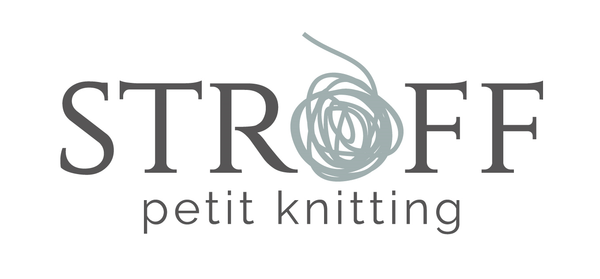Many of our models are knitted with one thread of wool and one thread of mohair (usually a thin thread of silk + mohair).
This thread makes the knitted piece softer, airier and fluffier - the fine mohair threads lie over the stitches like a soft focus, and the silk thread gives a fine shine.
How does a thread of mohair affect the knitted piece?
The mohair thread is very thin, but it still has a significant effect on the needle size and gauge when knitted with a thicker yarn: When we add mohair to our main yarn, we usually go at least one, sometimes two needle sizes higher we would use for the main yarn alone. The fluffy mohair fibers fill the stitch structure, making the knitted piece looser and lighter, but not full of holes. This means the material falls very nicely.
How can I add mohair if it isn't included in the instructions - and can I leave it out?
Basically, any model that is knitted with one thread according to the instructions can also be knitted with one thread of mohair. This changes the stitch pattern, structure and “feel” of the model; patterns become softer and less sharply defined. So here it all depends on your own taste!
If you prefer to knit a single-thread model with mohair, switch to a slightly thinner main yarn:

Here you can see three samples, exactly the same pattern three times, three different yarn combinations: At the top (beige) thick merino wool without mohair. In the middle a thread of thin, somewhat fluffy yarn (Ecopuno from Lana Grossa) with mohair, and at the bottom a thread of thin merino wool with mohair.
The sample piece at the top without mohair is very grippy and firm, the pattern is particularly sharply defined. The middle sample, on the other hand, is very light and fine because both threads are airy and fluffy. The third sample is roughly in between - it is more grippy than the sample made from the fleece yarn, but still softer and lighter than the sample made from pure merino wool.
So if the model is knitted with medium-thick merino wool, e.g. Cool Wool big from Lana Grossa, you switch to the next thinner alternative, here the Cool Wool, and add a thread of mohair - and then knit the model with the specified needle size. You can also knit a two-thread model with one thread if you can't tolerate mohair. To do this, leave out the mohair thread and use a slightly thicker single-threaded wool - it is important that you achieve the specified stitch sample.
When it comes to the amount of yarn, the yardage is crucial here: If you need 750 m of thicker wool for the single-thread knit sweater, for example, you need the same amount for the two-thread knit sweater, namely 750 m of the thinner wool and 750 m of mohair.
How do I choose the right shade of mohair?
Especially at the beginning, many people think that the mohair has to have the same color as the main yarn - and then don't know what to do if they can't find the desired color in both yarn qualities. This need not be! Here we will show you how many different colors of mohair can be combined with the main yarn, and what effect similar but also contrasting colors have.
We knitted some samples and, for example, knitted the same basic color with different mohair threads, but also different basic yarns with the same mohair. Below we show you our results:



















